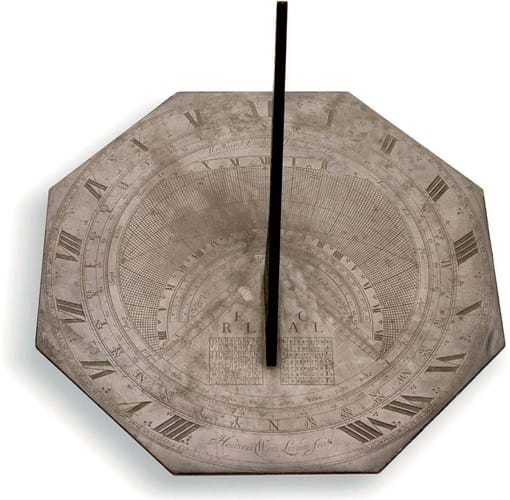
The instrument, invented earlier in the century by the mathematician and clergyman William Oughtred (1574-1660), has a principal feature of a ‘double’ gnomon.
When correctly set, it indicates both the time plus a range of extra astronomical data, including the sign of the zodiac in which the sun is situated, the times of sunrise and sunset, the length of the day from sunrise to sunset and the altitude and azimuth (direction) of the sun.
Other calibrations engraved on the dial include a semi-circular lunar hour-scale by which the time may be deduced from an observation of the moon.
The need for a high degree of mathematical knowledge and considerable skill in engraving means they are comparatively rare.
The example offered by Summers Place Auctions in Billingshurst on March 20 is signed Henricus Wynne Londini Fecit and also carries the name Richard Earle of Lauderdale, his initials REL and those of his wife Anne Campbell. Richard Maitland (1653-95), who fought for the deposed King James II at the Boyne, succeeded to the 4th Earldom of Lauderdale in 1691, dating this dial to a narrow period (1691-95).
The octagonal dial, measuring 17in (43cm) across, is in remarkably good condition, with the crisp engraving and a lack of verdigris suggesting it has spent little time outdoors.
Offered with an attractive estimate of £2000-4000, it sold for £22,000 (£28,600 including premium) to a private Canadian buyer.
A similar Wynne dial bearing the arms of the Cornwallis family, affixed to a carved Portland stone pedestal of a similar period, was sold at Summers Place Auctions in 2014 for £20,000.














